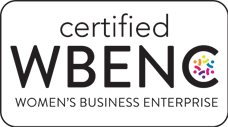
Executing An Effective Non-Profit PR Strategy
With a robust PR strategy, your nonprofit can easily differentiate its messaging from the competition, and garner support from the community. Additionally, you can easily reach the right audiences and communicate your message effectively.
In this guide, we’ll walk you through the key steps to executing an effective non-profit PR strategy.
7 Steps For Executive A Successful Nonprofit PR Strategy
If the public doesn’t know about your nonprofit, it’s tough to get support and donations. That’s why you need a PR strategy that utilizes earned, owned, and paid media to get your message to the public.
Here are seven steps for executing an effective nonprofit PR strategy.
1. Set Clear Goals
Goals are long-term achievements that you want to accomplish with your PR strategy. They guide your PR efforts and align them with the organization’s overall objectives.
For a non-profit, goals could range from increasing donations or volunteers to getting more media coverage for a particular cause.
When setting goals, make sure they are specific, measurable, achievable, relevant, and time-bound (SMART). This will help you track progress and adjust your strategy accordingly.
2. Identify Your Target Audience
All successful PR strategies begin with understanding who your target audience is. Knowing your target audience lets you craft messages that align with your audience’s needs and preferences. Additionally, it lets you use the right channels to reach them effectively.
To identify your target audience, consider factors such as demographics, interests, and behaviors. You can also conduct market research through surveys or focus groups to gather more specific insights about your audience.
3. Incorporate Thought Leadership
As part of your non-profit PR strategy, it’s essential to position yourself as a thought leader in its field. Thought leadership involves showcasing your organization’s expertise and perspectives on relevant issues and current events.
To do this, create content such as blog posts, whitepapers, or industry reports that provide valuable insights and solutions. Alternatively, secure speaking opportunities for key members of your organization at relevant conferences or events.
4. Use The Right Mix Of Channels
Both traditional and digital channels play a crucial role in PR for nonprofit organizations. Traditional channels, such as newspapers and television, offer broad reach, while digital channels, such as social media and email marketing, provide targeted messaging.
It’s essential to have a balanced mix of both traditional and digital channels in your PR strategy. This will help you reach a wider audience while still targeting specific groups effectively.
The PESO model is a helpful framework for planning and executing your PR strategy. It stands for Paid, Earned, Shared, and Owned media. Mixing all channels in this model helps you execute effective campaigns by maximizing your reach and impact.
5. Leverage Partnerships
Collaborating with other organizations or businesses can also be a powerful PR strategy for nonprofits. Partnering with like-minded companies or sponsoring events can help increase brand awareness and credibility.
For instance, if you are a non-profit focused on education for underprivileged children, partnering with a local business like a bookstore can help you amplify your message and gain more support for your cause.
Aside from collaborating with like-minded organizations, partner with influencers. Influencers with a niche audience similar to your organization’s target audience can help you reach potential donors and supporters. Their followers trust their recommendations, which adds credibility to your organization and garners support for your cause.
6. Build Relationships With Media
Media relations are a critical aspect of public relations for nonprofits. Building and maintaining relationships with journalists, bloggers, and influencers can help you secure media coverage for your organization.
To establish these relationships, consider offering exclusive stories or interviews to media outlets that cover topics related to your mission. You can also invite journalists and bloggers to events or provide them with compelling data or statistics to support your cause.
Additionally, respond promptly and professionally to media inquiries and requests for interviews. This helps build a positive reputation for your organization in the eyes of the media, making them more likely to cover your stories in the future.
7. Leverage Social Media
In today’s digital age, social media platforms are powerful tools for nonprofits to connect with their target audience, promote their cause, and raise awareness. By creating engaging content and utilizing hashtags, you can reach a wider audience and encourage them to support your organization.
Social media also allows for direct communication with potential donors and supporters. You can use platforms like Facebook and Twitter to share updates on your organization’s progress, thank donors for their contributions, and answer any questions or concerns they may have.
Final Thoughts
An effective PR strategy is valuable for non-profits. It helps you widen your reach and improves trust and credibility, increasing donation and partnership opportunities.
If you’d like a solid foundation for your non-profit PR strategy, get in touch with us at The Hoyt Organization. We help non-profits create tailored PR strategies that elevate their organization and its causes.









